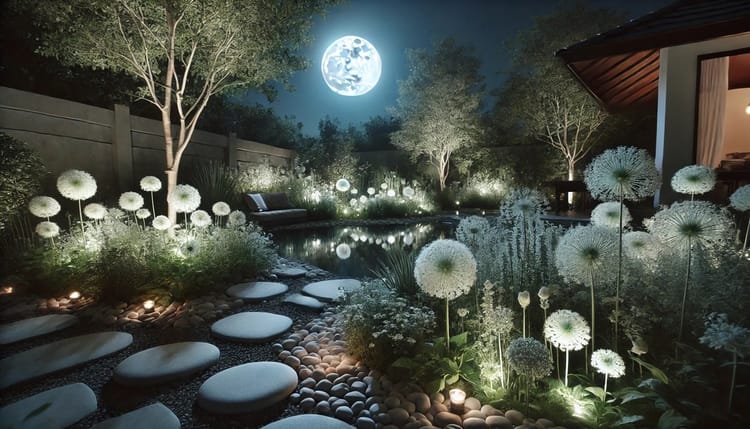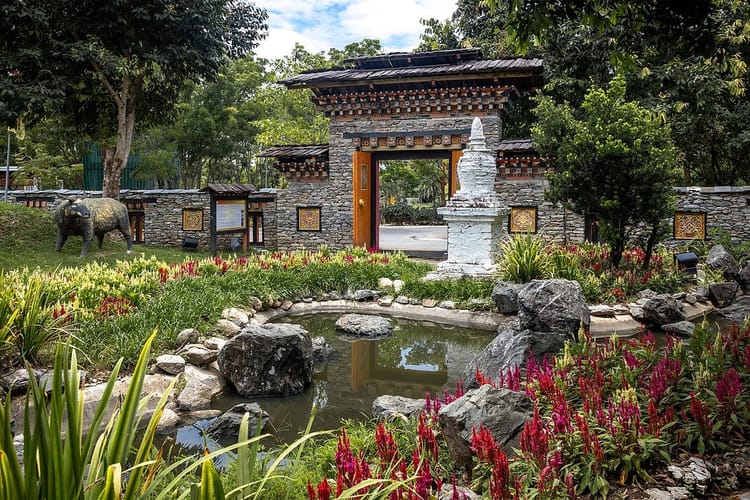Is Artificial Grass Bad for Your Garden?

During the recent drought in California, I had a lot of people asking me about artificial lawns. California was in drought conditions almost every year from 2011-2022 and landscape water restrictions were put in place, prompting many people to rethink their thirsty lawns. Despite their apparent lower water needs than a natural grass lawn, I don't recommend artificial grass for use in gardens and instead suggest looking at other lawn alternatives.
Here are the 10 reasons why I recommend against artificial grass lawns:
It doesn't save as much water as you might think
Artificial grass obviously does not need water to grow, but it will require some watering as part of the maintenance of the lawn. In fact, this maintenance could end up needing more water than a native-plant alternative that can survive on rainfall alone. Why does it need water? There are several reasons:
- Artificial grass needs watering to keep it clean - unlike natural grass, dirt, and debris cannot be recycled down into the soil. Sometimes, you'll even need to use soapy water to keep it clean.
- Artificial grass needs watering to keep it cool, as it can get very hot in the summer sun.
- Artificial grass needs watering when it is used for play or sports to reduce friction and prevent rug-burn-like injuries.
- Artificial grass needs watering to prevent its synthetic fibres from getting too brittle with dryness and breaking apart, shortening the lifespan of the surface.
It gets hot, very hot 🥵
One of the best things about a natural grass lawn is that it feels cool to the touch, making it an inviting surface to lay on in the summer. Artificial grass is not as naturally cool. The synthetic fibres absorb heat and radiate it back out, causing a sunny lawn area to have a ground temperature that can easily reach over 70C (160F). This makes the artificial lawn far too hot for use on the summer days when you are most likely to want to use the area. In one extreme example, the heat of an artificial grass surface caused an athlete's shoes to melt during Summer training.
Terrible for the environment
Artificial grass is made up of many small pieces of plastic materials, many of which will break off over its lifetime and contribute to the microplastics that are already causing havoc in our water and soil ecosystems. A study in Sweden estimates that Artificial Grass sheds over 2000 tons of microplastic per year across the country. A natural lawn is a big store of carbon that is absorbed from our atmosphere; removing this to install artificial grass releases carbon back into the atmosphere and the artificial grass will no longer permit carbon absorption into the soil below. The carbon footprint for artificial grass is also high due to its manufacture, transport, and storage.
Not easily recyclable
Unlike a grass lawn, artificial turf needs periodic replacement as most residential products only have a 5-10 year lifespan. The complex structure of artificial grass makes it difficult to recycle and it is too expensive to renew for reuse. The vast majority of used artificial grass is sent to landfills.
It will always look unnatural
To be fair, artificial grass is a lot more realistic looking now than in the past, but it always looks fake and out of place in a yard that has shrubs or other greenery surrounding it. Even the most realistic-looking products are still obviously fake due to their uniform color and length of the blades of grass, the lack of movement in the wind, and you will see a lot fewer birds or insects on your fake lawn. It also smells like plastic - you won't get the same earthy petrichor scent that you get when a dry lawn is rained on.
Surface Runoff
Artificial grass does not allow water to be absorbed into the ground as easily as natural grass. Some of the newer products have perforations to allow for drainage but they will still not drain as well into soil as natural grass lawns do. Furthermore, the ground under a fake lawn needs to be heavily compacted, causing water to run off this surface under the fake lawn. As a result, a lot of rainwater will run off the surface into surrounding areas. This can cause flooding by overloading drains with too much water at once.
Not as comfortable as real grass
A fake lawn is not as nice to lie on as a natural lawn. Artificial grass needs to be laid on a heavily compacted base and is often laid over concrete so it won't have the same soft feeling that lying on a real lawn has. I have fond memories from my childhood of feeling grass in our backyard, picking daisies, or plucking the grass to play with. Fake lawns do not have that tactile feel, and will always feel like sitting on a plastic rug.
Not a very safe play surface
Slipping on artificial grass can cause nasty friction burns and it is not a good shock absorber which can cause injury when jumping around on the surface, or sliding off a slide. In recent years, athletes in many field sports have been pushing to get rid of artificial turf pitches due to the increased injury rates that occur on artificial turf versus grass. If you want a soft play surface that isn't grass, playground wood chips are a much better choice.
Bad for Wildlife
Laying down artificial grass is similar to pouring a concrete patio - the soil underneath will become devoid of life. Even in a pristine natural lawn that has no weeds, it will still support worms, snails, and other beneficial insects for your garden, and provide a food source for visiting birds. All this will be gone after installing artificial grass and your garden may start to feel sterile and absent of life.
High Cost to install and Maintain
Compared to the cost of maintaining a grass lawn, the installation costs of a fake lawn are typically much higher when amortized over the expected lifetime of artificial grass. While many manufacturers claim it is good for 10-20 years, they often start to look worn out after the first 5 years.
Artificial grass is also much harder to do spot repairs. A bare piece of natural grass can be fixed by reseeding or laying a small turf patch, such repairs are not as easy with artificial grass. As artificial lawns are usually installed in multiple rolls like a carpet, they can be prone to weeds growing in the seams or edges, which will require periodic cleanouts.
Another aspect of maintenance for a fake lawn is that it requires brushing when flattened by people or objects moving or lying on the surface. On a real grass lawn, the grass blades will bounce back into place naturally. The plastic blades of fake lawns are held up by infill material that will need to be reapplied periodically.
As mentioned in our first point, they also require periodic cleaning, which is a lot more labor-intensive than any cleaning you might do on a real lawn. Despite the claims of artificial lawn suppliers, they are not as low maintenance as they might seem.
In my opinion, there is little benefit in using artificial grass as a ground cover. If you are considering a fake lawn, ask yourself why the area needs a lawn in the first place. I only recommend lawns of any kind to clients when they want a space for activity. Grass Lawns are the best natural ground cover when you have pets and children playing in your garden. If it is purely for aesthetic reasons like in a front yard to cover ground between shrubs, maybe you should embrace the "no lawn" strategy and use an alternative natural ground cover. The plant materials detailed in our post on Lawn Alternatives would all work in this situation. A better option may be to completely rethink your front yard and instead of a lawn with shrubs on the edge, you could embrace a more filled-in look where shrubs are distributed across the area and cover the gaps with mulch. Using native plants or plants from a similar climate to your area will reduce the need for watering.





